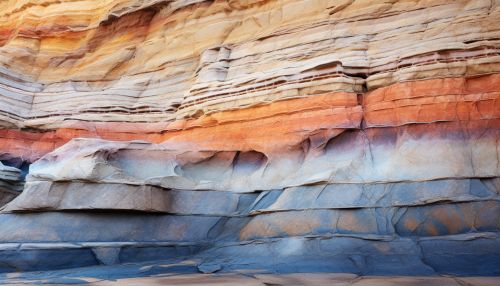Interval Biozone
Definition and Importance
An Interval Biozone is a term used in biostratigraphy to describe a specific type of biozone that is defined by the first (or last) appearance of a particular species in the fossil record. This type of biozone is important for understanding the relative dating of rock layers and the evolution of life on Earth.
Types of Biozones
There are several types of biozones, including range biozones, concurrent range biozones, lineage biozones, and interval biozones. Each of these types is defined by different criteria, and they all have their uses and limitations in biostratigraphic studies.
Interval Biozones
An interval biozone is defined by the first or last occurrence of a particular species in the fossil record. This type of biozone is particularly useful for dating rock layers, as it provides a clear marker of a specific point in time. The species that defines an interval biozone is often one that evolved or went extinct rapidly, providing a clear and distinct marker in the fossil record.
Use in Biostratigraphy
Biostratigraphic studies often use interval biozones to help date rock layers and understand the evolution of life on Earth. By identifying the species that define these biozones, scientists can determine the relative age of the rock layers and gain insights into the environmental conditions and evolutionary processes that were occurring at that time.


Limitations
While interval biozones are a useful tool in biostratigraphy, they do have some limitations. For example, the species that define these biozones must have had a wide geographic distribution and a short evolutionary lifespan. If a species was localized to a specific area or existed for a long period of time, it would not provide a clear and distinct marker in the fossil record. Additionally, the preservation of fossils is not always perfect, and there may be gaps in the fossil record that can make it difficult to identify the exact first or last occurrence of a species.
Conclusion
Despite these limitations, interval biozones remain a crucial tool in biostratigraphic studies. They provide a way to date rock layers and understand the evolution of life on Earth, and they continue to be used by scientists in a variety of fields.
